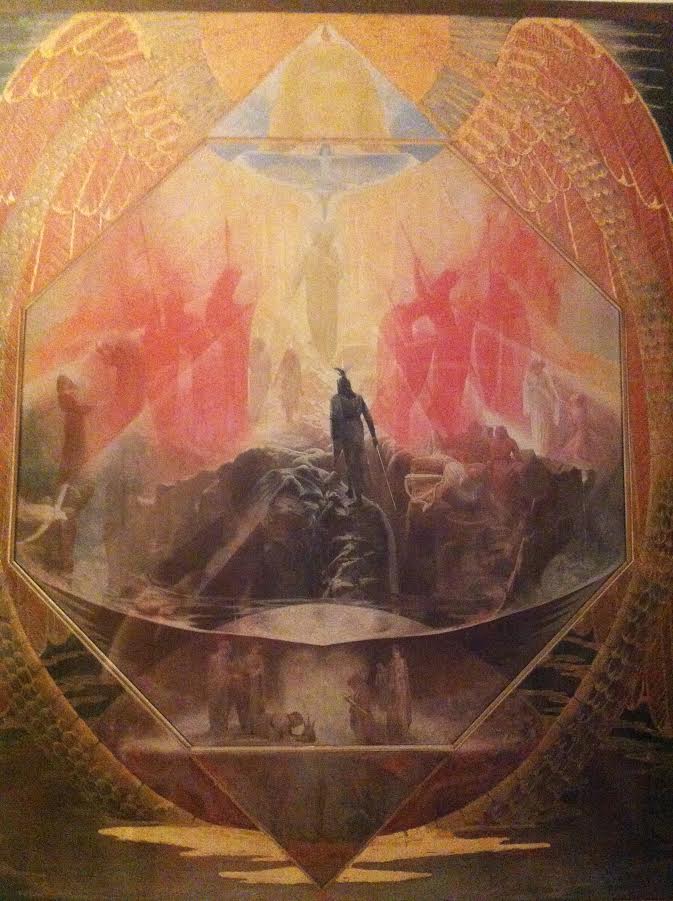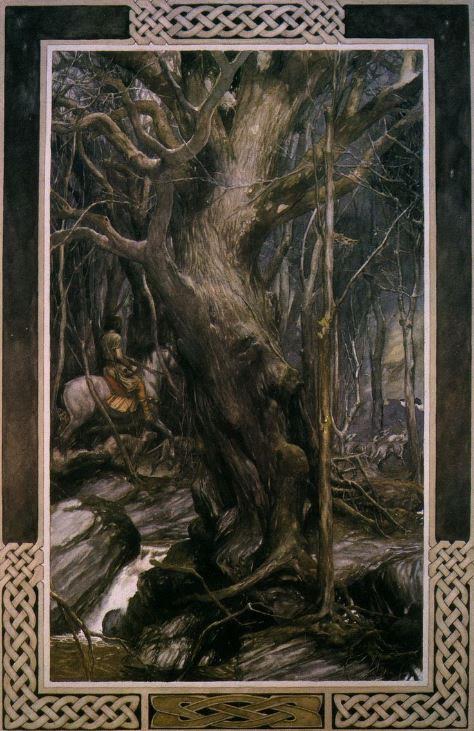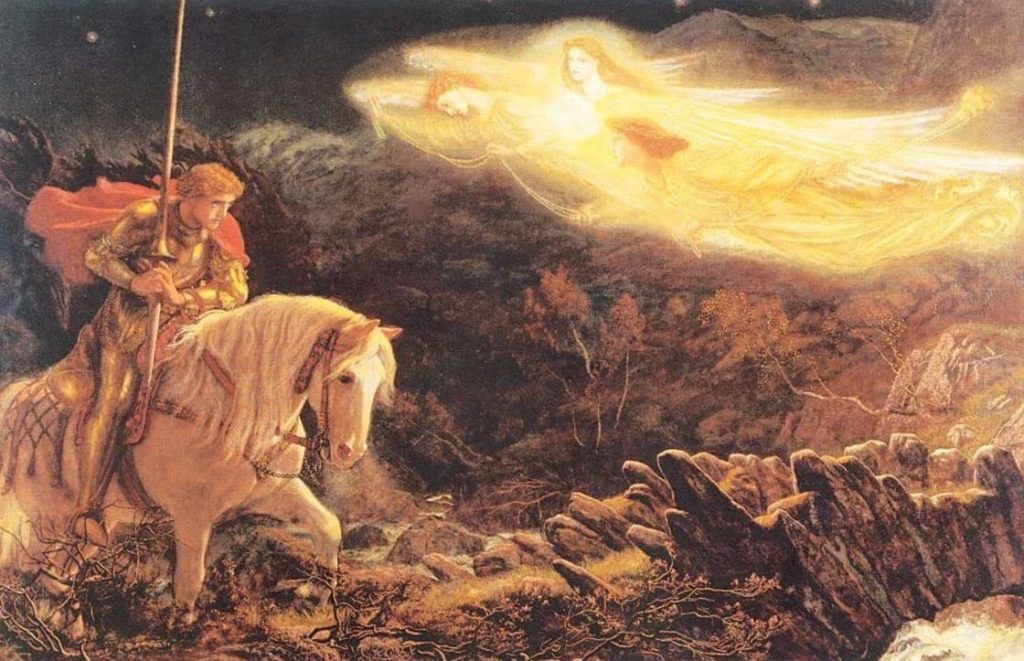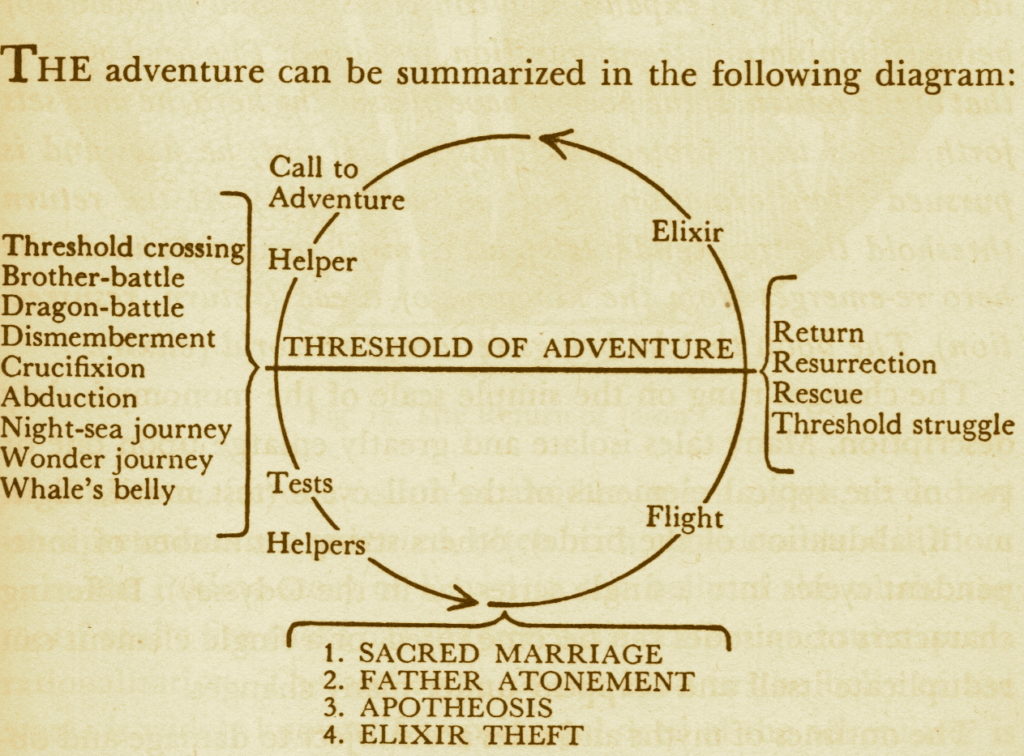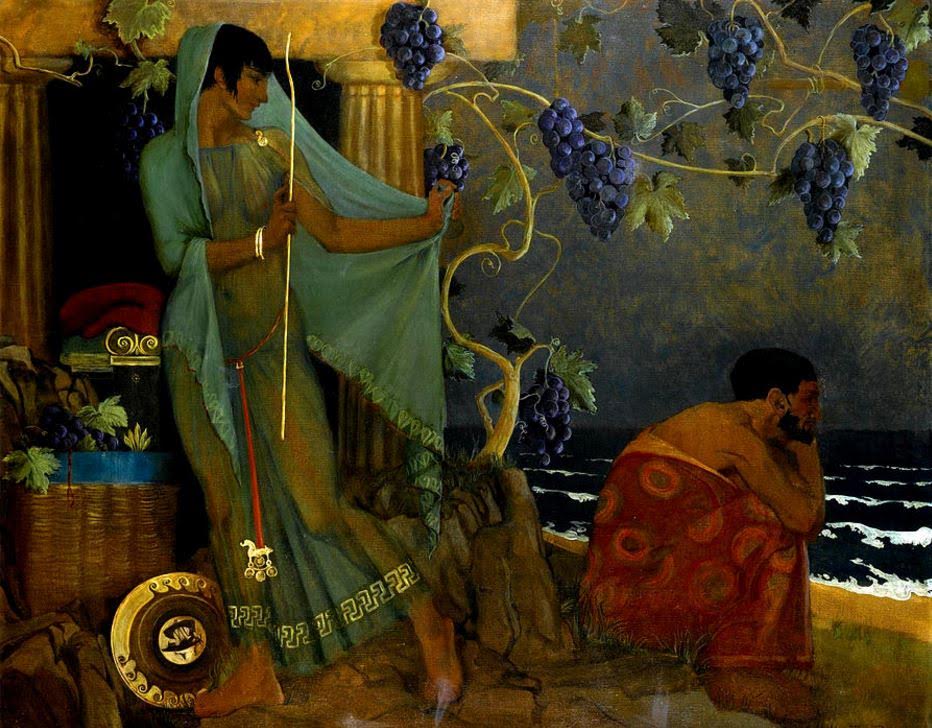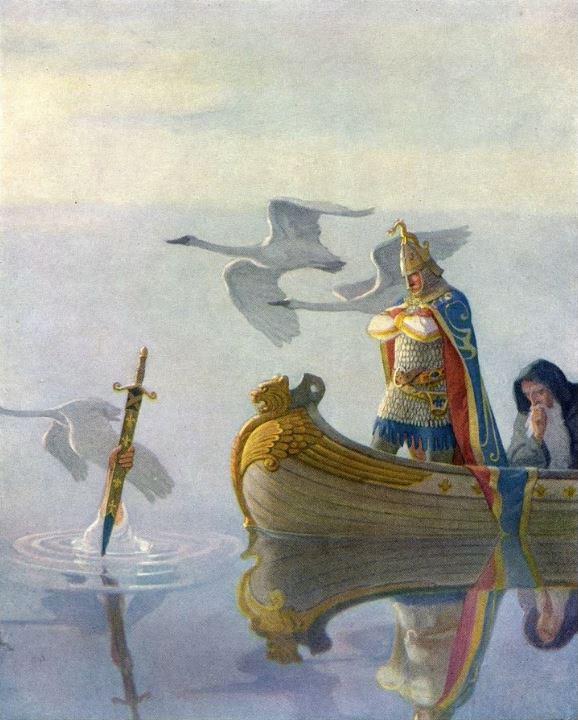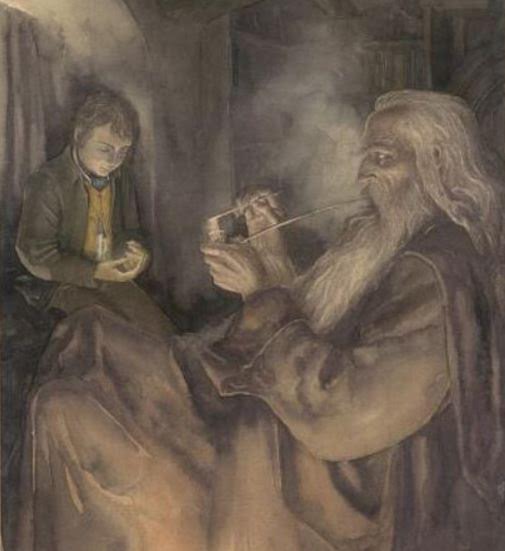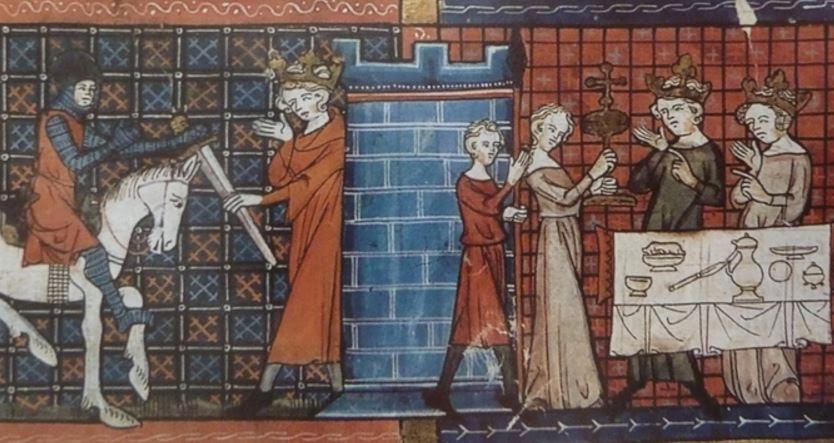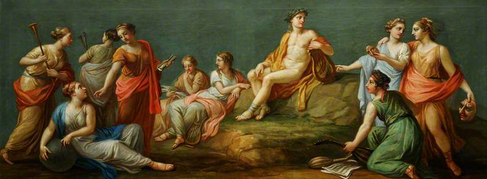Steven Pressfield
The Nine Muses – Creativity and the Higher Realm
And one day they taught Hesiod glorious song while he was shepherding his lambs under holy Helicon, and this word first the goddesses said to me – the Muses of Olympus, daughters of Zeus who holds the aegis: “Shepherds of the wilderness, wretched things of shame, mere bellies, we know how to speak many false things as though they were true; but we know, when we will, to utter true things.”
So said the ready-voiced daughters of great Zeus, and they plucked and gave me a rod, a shoot of sturdy laurel, a marvellous thing, and breathed into me a divine voice to celebrate things that shall be and things there were aforetime; and they bade me sing of the race of the blessed gods that are eternally, but ever to sing of themselves both first and last.
(Hesiod, Theogeny)
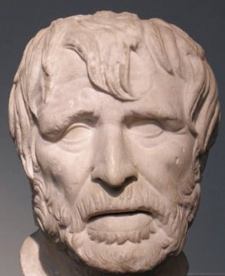
Hesiod
Sometime between the eighth and seventh centuries B.C. the poet Hesiod created his Theogeny, a work outlining the birth and genealogy of the Gods.
At the beginning of this epic poem, Hesiod talks about how, as a shepherd, he was caring for his flock on the slopes of Mt. Helicon, in the region of Boeotia. While there, Hesiod says that the Muses came to him and inspired him to create the Theogeny, a work that to this day provides the basis for ancient Greek religion.
Hesiod, before that, had not discovered his artistic self. He was a shepherd, the son of a farmer.
And yet, while on the slopes of this sacred mountain, the goddesses, the Muses, came to him and inspired him to bring forth his great work.
Mt. Helicon – 1829
Hesiod does not say he invented the contents of his work, or that he gathered existing tales from all over the Hellenic world.
The Gods gave him that song to sing. They inspired it in him, and he heard them.
We may scoff at this sort of thing today, our modern, media-driven minds too dense and distracted to hear anything beyond the ping of a mobile, but in the ancient world, and later ages of faith, the greatest artists and creators were those that paid attention to divine inspiration.
In the ancient Greek and Roman worlds, creativity and artistic endeavour were the realm of the Nine Muses, the daughters of Zeus and Mnemosyne, or ‘Memory’.
Tell me, Muse, the story of that resourceful man who was driven to wander far and wide after he had sacked the holy citadel of Troy. He saw the cities of many people and he learnt their ways. He suffered great anguish on the high seas in his struggles to preserve his life and bring his comrades home. But he failed to save those comrades, in spite of all his efforts. It was their own transgression that brought them to their doom, for in their folly they devoured the oxen of Hyperion the Sun-god and he saw to it that they would never return. Tell us this story, goddess daughter of Zeus, beginning at whatever point you will.
(Homer, The Odyssey)

There is a wonderful book that every creative person should read and re-read. It’s called The War of Art, by historical fiction author, Steven Pressfield. The book is about doing the things that you love and were meant to do without giving in to any excuses, or ‘Resistance’, as Pressfield calls the artist’s enemy.
Whenever I read The War of Art, Pressfield reminds me of something that I forget from time to time.
Creativity should never be taken for granted.
If you feel that there is something creative you want to do, or be, it is your sacred duty to do or become that. When you feel those urges, you have to fight ‘Resistance’ and rationalization with all of your might so that you can bring those things you were meant to create to fruition.
Those urges are the Muses speaking to you, telling you it’s time. If you ignore them, it’s to the detriment of your own soul.
Because when we sit down day after day and keep grinding, something mysterious starts to happen. A process is set into motion by which, inevitable and infallibly, heaven comes to our aid. Unseen forces enlist in our cause; serendipity reinforces our purpose.
This is the other secret that real artists know and wannabe writers don’t. When we sit down each day and do our work, power concentrates around us. The Muse takes note of our dedication. She approves. We have earned favor in her sight.
(Steven Pressfield, The War of Art)

Homer and his Guide – William Adolphe Bouguereau 1874
In ancient eyes, those who ignored the Gods didn’t do too well.
Hesiod and Homer knew that it was their duty to honour the Muses, they knew that they could not have created the works that they did without the goddesses’ help. Hubris was not a good thing in the ancient world.
But it was not just Hesiod and Homer who called on these goddesses for help. Throughout history, some of the greatest poets and other artists did so too.
Tell me, Muse, the causes of her anger. How did he [Aeneas] violate the will of the Queen of the Gods? What was his offence? Why did she drive a man famous for his piety to such endless hardship and such suffering? Can there be so much anger in the hearts of the heavenly gods?
(Virgil, The Aeneid)
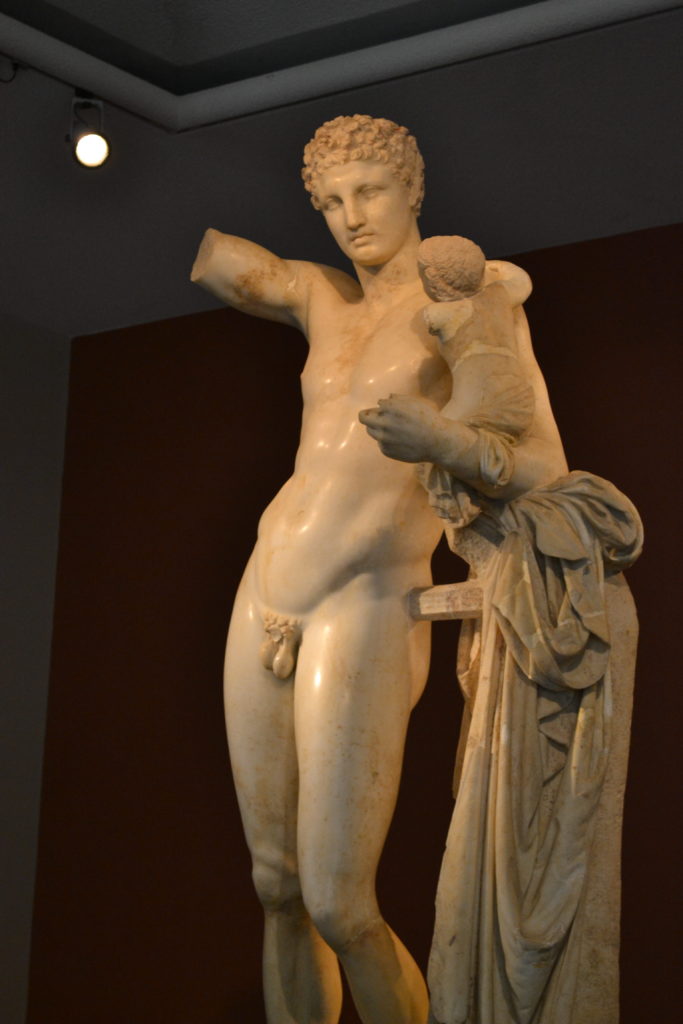
Praxiteles’ Hermes and Dionysos
The artist who called on the Muses for aid and blessing was the one that was listening.
We know of writers and poets who have called on the Muses in their work because they have been written down, but I imagine that painters and sculptors would have done so too. What might Praxiteles have done before he broke the surface of a piece of marble? Or Michelangelo before he put his brush to the ceiling of the Cappella Sistina? What went through Mozart’s head before the first heavenly notes of his Clarinet Concerto in A major came to him? Just listen to it…
Before an ancient singer breathed those first notes, or before the lyre player plucked that first string at the Panathenaea or the Pythian Games, you can be sure that some inner prayer, conscious or unconscious, was sent up to their own Muse.

Apollo
You can also be sure that for the artist whose heart was open to this, the Muses spoke back.
…and I alone was there, Preparing to sustain war, as well Of the long way as also of the pain, Which now unerring memory will tell. Oh Muses! O high Genius, now sustain! O Memory who wrote down what I did see, Here thy nobility will be made plain.
(Dante, Inferno)
But who were the Muses? Early traditions said there were three, but that eventually turned to nine, and that is the number that has been given for ages. Their leader was Apollo, the God of Art, Light and Prophecy, and in this particular capacity he was known as ‘Apollo Mousagetes’, or ‘Apollo Muse-leader’.
Each one of these goddesses was responsible for a particular art form, and so, individual artists may have called on certain Muses. The names of these goddesses and their assigned art are as follows:
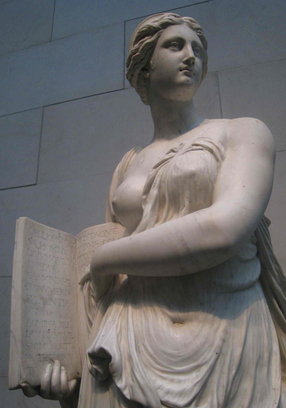
Calliope – Epic Poetry
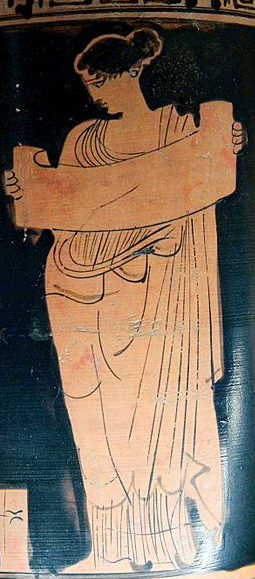
Clio – History
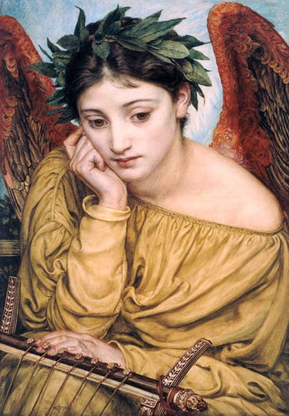
Erato – Lyric Poetry
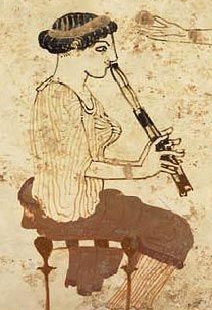
Euterpe – Song and Elegaic Poetry
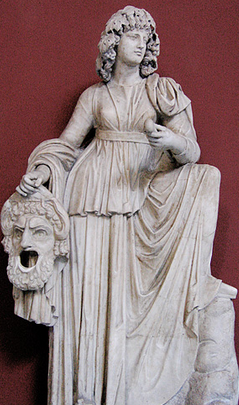
Melpomene – Tragedy
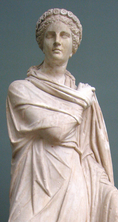
Polyhymnia – Hymns

Terpsichore – Dance
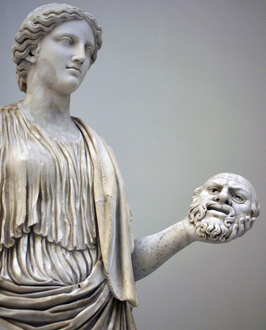
Thalia – Comedy
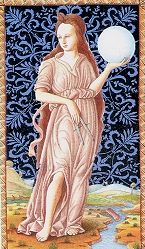
Urania – Astronomy
I will begin with the Muses and Apollo and Zeus. For it is through the Muses and Apollo that there are singers upon the earth and players upon the lyre; but kings are from Zeus. Happy is he whom the Muses love: sweet flows speech from his lips. Hail, children of Zeus! Give honour to my song! And now I will remember you and another song also.
(Homeric Hymn to the Muses and Apollo)
Some of the arts assigned to the Muses might not seem like ‘art’ to us today – I’m thinking of Astronomy and History in particular. However, to the ancients, this made perfect sense. Astronomy involved philosophy and the understanding of the Heavens; it required great imagination and thought.
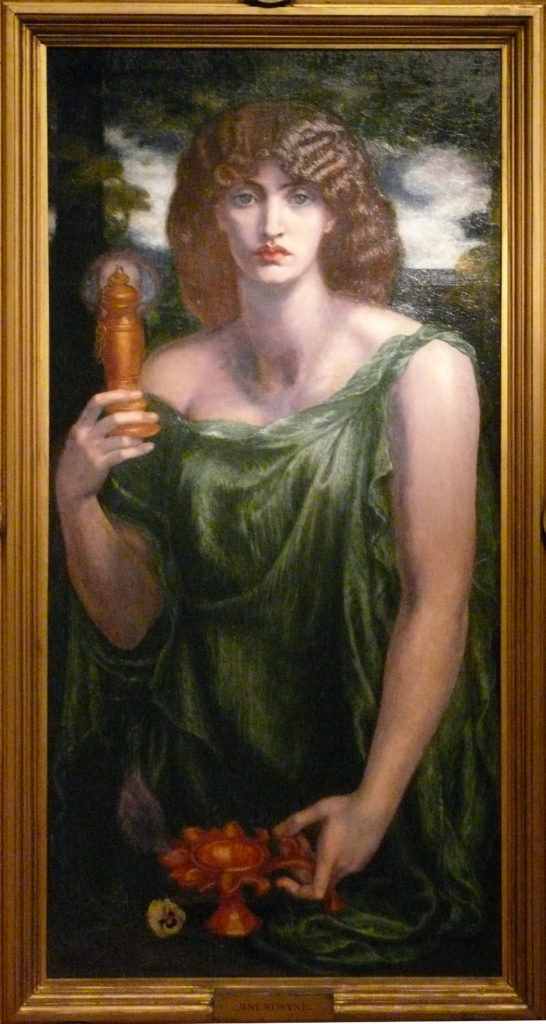
Mnemosyne by Gabriel Dante Rosetti
And History? Well, to me that is ‘Mnemosyne’. History is the record of human achievement in all areas, including art. History, poetry, and storytelling go arm in arm.
It must have been a humbling experience for ancient artists to know that the Muses were looking over their shoulders as they carried out the work they were inspired to do.
It must also have been a wonder-full experience to feel that, to know that you were not alone.
My hope is that we have not totally lost this today – artists, writers, athletes, inventors, creators of all kinds will find themselves in what we call ‘The Zone’. Many will thank ‘God’ for their successes, they will be exhilarated after a good session.


